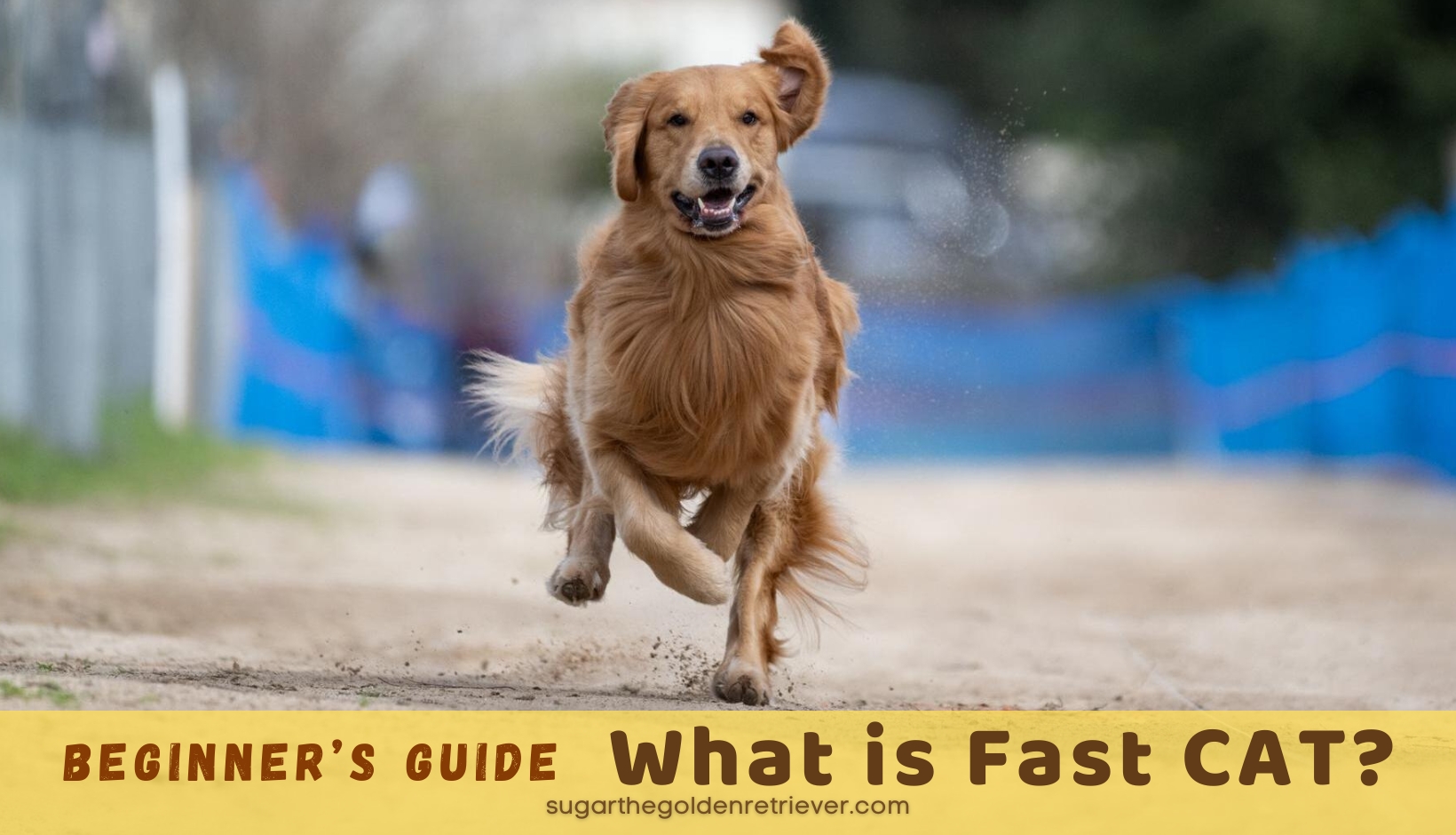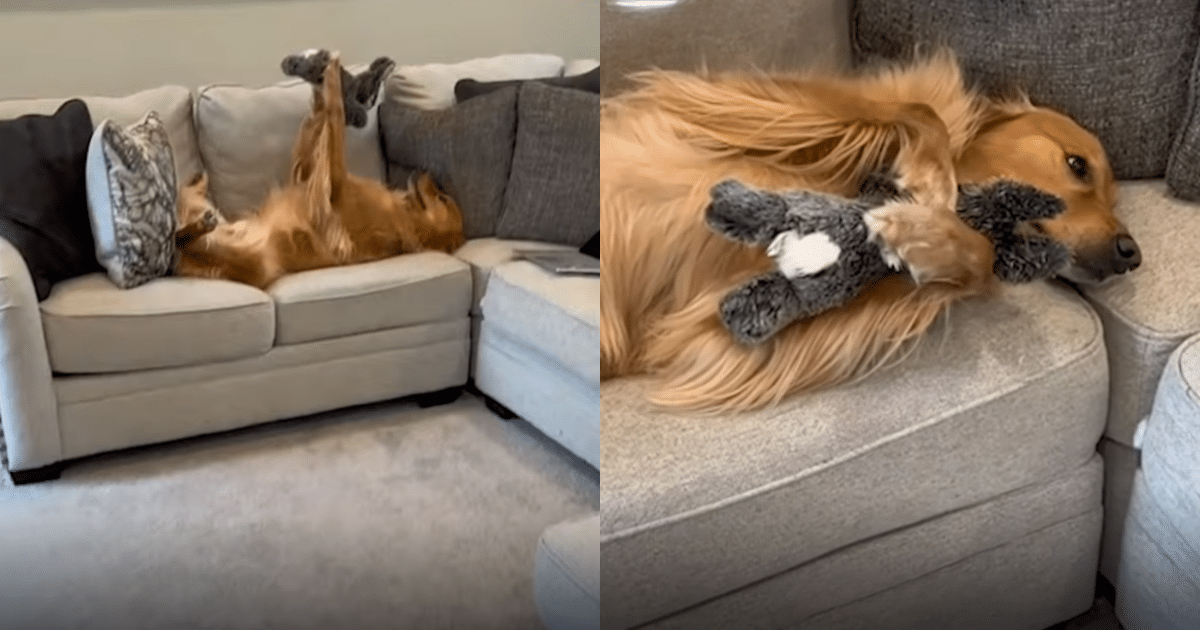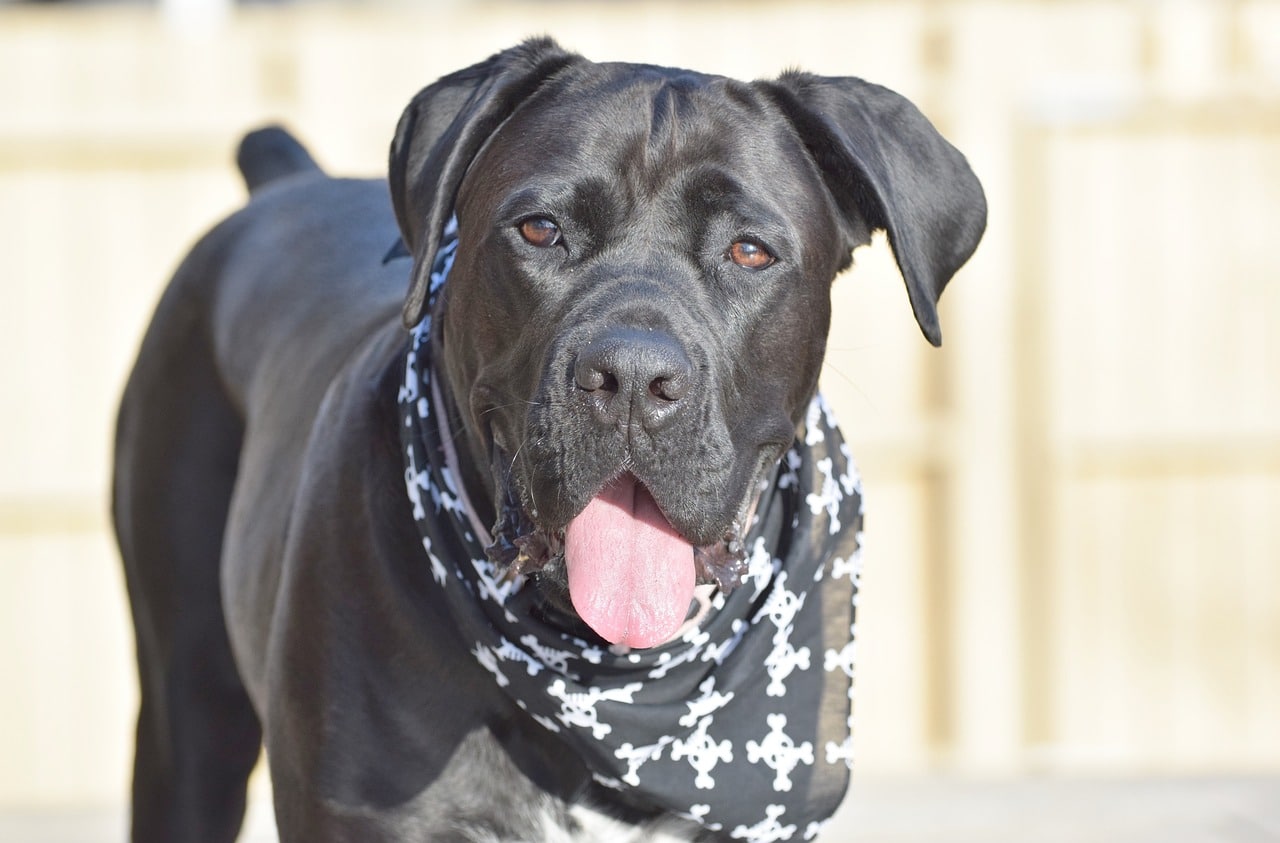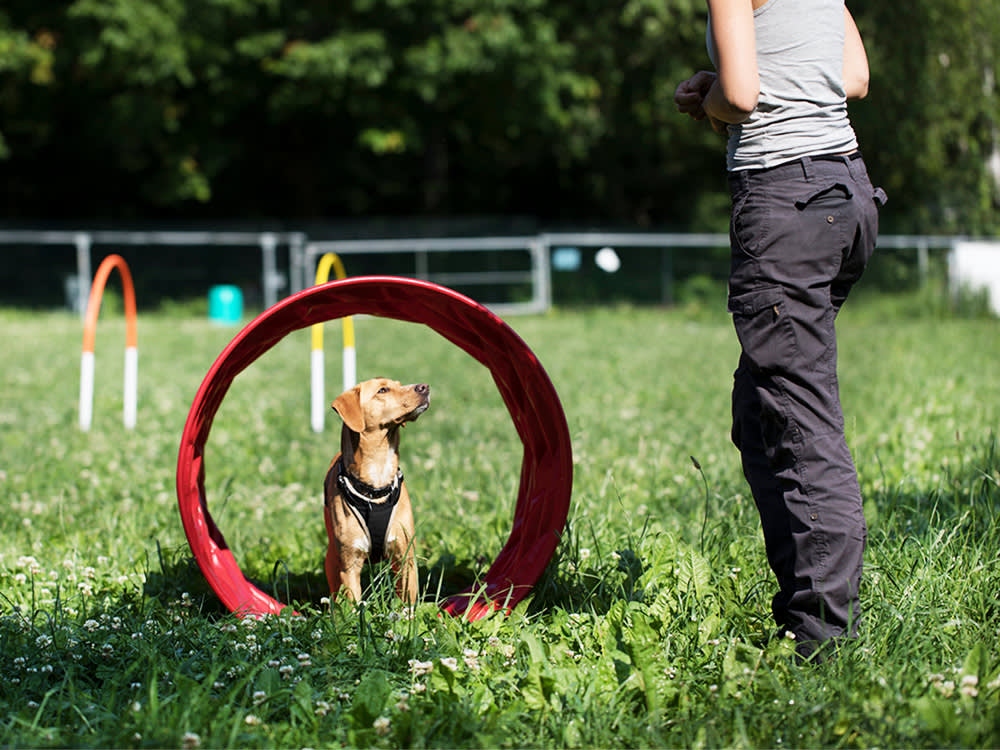After a year of being a show dog, and when KENZO achieved his AKC Championship at the March 2023 GRCA Western Regional Specialty, we wanted to engage in something enjoyable that involves us (not a handler) and provides KENZO with both physical and mental stimulation. Since KENZO enjoys attending agility classes, having fun with dock diving, and loves running around, we’re thinking of getting into dog sports events like agility, dock diving, and fast CAT. This year, we’re delighted to share that we’re starting KENZO in the exciting Fast CAT dog sport.
Beginner’s Guide – What is Dog Sport Fast CAT?
Since this is our first time participating in Fast CAT, in this post, we’ll share what we’ve learned about the dog sport and our recent experience joining Dash Dogs and an AKC Fast Cat Trial.
Tips on Getting Your Dog Started in Fast CAT
Getting your dog involved in Fast Cat requires minimal training. It’s easy especially if your dog loves running and can chase a lure naturally.
As a Golden Retriever, KENZO has the instinct to chase, so chasing a lure comes naturally to him.
1. First and foremost, ensure your dog is in good health as Fast CAT is a high-energy dog sport.
2. Participate in a Fast CAT fun trial, especially if you’re unsure about your dog’s ability to run the 100-yard dash. It’s also a great way to familiarize both your dog and yourself with the Fast CAT track setting and rules. Find a local organization in your area where you can join to begin training your dog for Fast CAT.
We joined the Dash Dogs organization located in Moorpark, CA. It’s about a 2-hour drive from where we live. They offer fun Sprint Trials similar to AKC’s FAST CAT tests.
3. For the fun trial, start your dog running the 50-yard dash. It’s a great way to access your dog and make necessary changes like who will be the releaser and the cacher (will be explained at What is Fast CAT?)
At Dash Dogs, during the check-in sign-up, it was recommended to start KENZO at the 50-yard dash. He did great and ran 5.17 seconds.
4. During the Fast CAT fun trail, watch others and do not hesitate to ask questions.
We appreciate that at Dash Dog, they ensure every dog can run the course successfully and have fun. For dogs that aren’t interested in chasing the lure, the Dash Dogs staff allows their humans to run with them.
5. Most importantly, remember that Fast CAT is teamwork and have lots of fun!
KENZO did fantastic! He completed two rounds of the 100-yard dash, taking a 40-minute break in between to hydrate and enjoy some treats. In his first run, he clocked in at 10.32 seconds, and in the second, he ran it in 11.59 seconds.
What is Fast Cat?
First, Fast CAT does not involve cats. Fast CAT or Fast Coursing Ability Test is a dog sport where a dog runs a 100-yard dash and chases a lure, typically a white plastic bag on a rope along a straight line.
Your dog’s performance is measured by timing them in seconds and scoring them based on their speed in miles per hour. Additionally, there’s a handicap system that factors in their height at the withers (explained below at Fast CAT Scoring and Titles).
Fast CAT is a dog sport that requires teamwork, with a handler serving as the ‘releaser’ at the beginning of the track, and a ‘catcher’ calling and waving at the end to retrieve the dog.
Fast CAT Field and Course
A Fast CAT track is straight, flat, and fully grassed or of soft sand/dirt. Also, the track area should be enclosed and gated with temporary gates at both the release and the finish areas to minimize opportunities for an uninterested dog to leave the start area and run to onlookers, parking, or paddock areas.
The Fast CAT Lure – Bunny aka White Plastic Bag
In Fast CAT, a dog chases a “bunny” (also known as a white plastic bag) attached to a manually operated mechanical lure. The lure must be a white plastic strip or a squawker. Care should be taken to ensure the lure does not bounce, possibly setting off the timers prior to the dog crossing the finish line.
Tally ho! at Fast CAT
Tally ho is a traditional cry used by hunters to signal the spotting of prey. It’s also used in Fast CAT. In Fast CAT, the “Huntmaster” will confirm the handler (releaser) by asking “Are you ready?” The releaser waits to hear “Tally ho” before releasing the dog upon hearing the cry.
Important Terms To Know in Fast CAT
Fast CAT – Fast Coursing Ability Test; FCAT for short
Paddock Master – A critical member of the FAST CAT Committee; ensuring that as a FAST CAT entrant is being run, the next entrant is present at the FAST CAT entry area, but not so close as to potentially distract the running dog either visually or by excessive barking/howling
Bunny Hop – A 50-yard run for dogs under 12 months old to get them interested in the game
Fun Run – A timed non-qualifying run, no points are accumulated
NQ – Non-Qualifying run
Bunny (Lure) – A white plastic bag attached to a line and drawn by a machine
Huntmaster – A dog club organizer’s staff; who oversees all dogs and handlers on the field, must ensure that handlers understand safe release and retrieval procedures
Tally ho! – The Huntmaster’s cue to release your dog to run
Releaser – Handler that releases the dog once they hear Tally Ho!
Start Box – 10 feet behind the starting line; where the releaser is positioned to start
Catch Area – The run-out area past the finish line; must have a catcher
Qualifying Run – A timed run that accumulates points towards an AKC Fast CAT title
Bag Hit – When a dog catches and attacks a bag while running

How Can Your Dog Participate at AKC Fast CAT Trial Event?
Ever since the American Kennel Club introduced Fast CAT in 2016, it has gained so much popularity and there’s an AKC Fast CAT Invitational.
1. All dogs can participate in Fast CAT, whether purebred or mixed breed. However, to participate your dog must adhere to these eligibility requirements.
2. Your dog must be at least 12 months of age.
3. Your dog must not show signs of lameness. (Take Note: During the trial event, an inspection committee will also assess your dog for lameness and fitness to compete.)
4. Female dogs in heat are ineligible to participate.
5. Spayed and neutered dogs are eligible to compete.
6. Dogs holding Limited or Conditional Registration are eligible to participate.
7. Have an AKC number.
How To Acquire Your Dog’s AKC Number?
1. AKC Standard Registration is intended for AKC’s recognized purebred breeds.
2. AKC Canine Partners is intended for mixed-breed dogs and dogs ineligible for AKC registration such as rescue dogs. Also, dogs with this registration must be spayed or neutered.
3. Purebred Alternative Listing (PAL) program, is intended for purebred dogs that cannot be fully registered with the AKC to participate in AKC events. Also, dogs with this registration must be spayed or neutered.
Finding AKC Fast CAT Trial Events
To find an AKC Fast CAT Trial in your area, follow these steps on the AKC’s event website:
1. Navigate to the Fast CAT Trial search page using this link.
2. Choose “Fast CAT” from the Performance Events dropdown menu.
3. Click on the map to select the state where you want to attend a Fast CAT.
4. Specify your preferred date range.
5. Click the “Retrieve Events” button highlighted in red.
6. A list of Fast CAT events in the selected state(s) will appear for you to explore.
Signing Up For AKC Fast CAT Trial Events
Once you select the Fast CAT event, keep note of the dog club organizing the trial. Most importantly the dates, when the open registration starts and ends.
Typically, many Fast CAT events allow you to register the day of the event. Be sure to check with the club organizer. Also, additional fees may apply.
To know more about the Fast CAT trial click the “View Complete Event Detail”
You’ll be taken to the organizer dog club site where you have to fill out a form to submit.
Once you submitted and paid for your FCAT trial, you will receive a confirmation email from the organizer dog club which also includes instructions and sign-up for event time.
What To Do Before the ACK Fast CAT Trial?
1. We cannot emphasize enough the importance of ensuring your dog is in good health and condition to participate, as Fast CAT is a strenuous event.
2. Ensure your dog’s nails do not touch the ground when standing. It is recommended not to trim them within 3-4 days of an event. Therefore, plan accordingly when scheduling your dog’s nail trimming.
3. Familiarize yourself with the handler’s and safety rules provided by the dog club organizers, usually sent via email. You can also find the general rules and regulations on the AKC website.
4. Be sure to review your registration and other rules provided by the club organizing the event.
What To Bring To AKC Fast CAT Trial?
Since you’ll be actively involved with your dog during Fast CAT, remember to only bring the essentials.
1. Collar and Leash – Ensure you have two collars and leashes. If your dog runs with a collar on the track, it must be a flat one without any hanging tags. If your dog runs ‘naked,’ the catcher should have an extra collar and leash ready once your dog is released.
Please Note: While waiting for your dog’s turn, they can wear a different collar or harness. However, once on the track, only a flat snug collar, a nonmetal muzzle allowing panting, and lure-coursing slip leads are permitted. If unsure, consult with the dog club organizers.
2. Water and Treats – Ensure your dog stays hydrated, especially on warm days. After completing the run, reward your dog with plenty of praise, pets, and delicious treats.
3. Fanny Pack – If you need to carry additional items such as a wallet and car keys and don’t have enough space in your pants pocket, consider using a fanny pack. A fanny pack is compact enough to be worn in various ways, such as around your waist or across your chest.
4. Handlers – Catcher and Releaser
As I mentioned above, Fast CAT is a dog sport that requires teamwork, with a handler serving as the ‘releaser’ at the beginning of the track, and a ‘catcher’ calling and waving at the end to retrieve your dog.
Thus, you’ll need two people: a handler, who releases the dog, and a catcher. Consider asking a family member or friend to accompany you to the trial.
5. Excitement! – Get ready for an exciting dog sport event with your furry friend, so bring lots of enthusiasm!

What To Expect At AKC Fast CAT Trial
1. Dogs – Expect numerous dogs participating, with some potentially being reactive.
Our practice is to keep a short leash and avoid nose-to-nose or butt-sniffing greetings. Many fellow dog owners are already aware of this rule.
2. Check-In – At check-in, provide your name and your dog’s name. Keep in mind, as there is often a line, to ensure you leave ample space between your dog and others while waiting your turn.
3. Inspection – An inspection is required to check your dog for lameness. For female dogs, a tissue is used to wipe their private area to ensure they are not in heat. (Note: This procedure also applies to spayed females).
4. After completing check-in and inspection, you will receive a ‘sticker’ for the handler (releaser) with your dog’s number and name.
5. Afterwards, the releaser queues up at the designated ‘waiting spot’ near the start of the track, while the catcher, equipped with an extra collar and leash, waits at the end. Typically, dog club staff are on hand to assist, ensuring three dogs are ready at all times.
6. When it’s your turn, you’ll hear your dog’s name called. As the releaser, you’ll then be permitted to enter with your dog.
Before releasing your dog, you may start up to 10 feet behind the starting line, ensuring that at least two dog paws are in the “start box.” The Huntmaster makes sure the catcher is also in position.
7. After the releaser and catcher are in position, the Huntmaster will ask the releaser, ‘Are you ready?’ When the releaser responds ‘Yes,’ the Huntmaster will say ‘Tally ho,’ signaling the time to release your dog. (Note: Do not leave the track until your dog is with the catcher).
8. After your dog is released, the catcher will call and wave to guide it in their direction. (It’s recommended that the catcher has a loud or commanding voice for the dog to hear, and it’s important for your dog to be familiar with the catcher.)
9. After your dog finishes, make sure to give lots of praise, provide a special treat, and offer water.
10. Usually, your dog can run twice but must wait a minimum of 20 minutes between runs.
11. Have Lots of FUN!
12. At the sign-in table, you’ll receive your dog’s run time in seconds. If your dog completes the 100-yard dash, you’ll be given a blue qualifying ribbon.
Please note: Video recording and photography can be challenging and often prohibited due to your active involvement in the event. Additionally, it is impossible to ask a spectator for assistance, as staying close to the fenced area is not allowed. However, typically there’s a professional photographer stationed at the end of the track to capture your dog’s run. Be sure to inquire about this when signing up with the dog club.
Finally, it’s important to note that Fast CAT trials are held rain or shine. While organizers may pause the trials during heavy rain, they will typically resume once conditions improve. Therefore, anticipate that the track may be wet and muddy, which could result in slower run times for your dog.
Fast CAT Scoring Calculation and Titles
Your dog runs individually and is timed in seconds. In order to receive a qualifying blue ribbon, your dog must finish the 100-yard dash.
How To Calculate Your Dog’s Fast CAT Time in MPH?
To calculate your dog’s Fast CAT run time in seconds to miles per hour (MPH), use this formula: 204.545 divided by the run time in seconds.
Fast CAT Handicap System
The handicap system is based on the height of the dog at the withers.
18” or greater = handicap of 1.0
12” up to less than 18” = handicap of 1.5
Below 12” = handicap of 2.0
How To Calculated Your Dog’s Fast CAT Points?
To calculate your dog’s Fat CAT points, you have to multiply the MPH by the handicap.
The final formula to calculate your dog’s Fast CAT point is:
204.545 divided by run time in seconds = MPH multiply by handicap = Fast CAT Points
OR
204.545/run time in seconds = MPH x handicap = Fast CAT Points
For examples: KENZO’s 1st AKC Fast CAT run times are:
1st run: 9.49 seconds = 21.553 MPH x 1.0 = 21.55 Points
2nd run: 9.86 seconds = 20.744 MPH x 1.0 = 20.74 Points
KENZO beat his Dash Dogs fun run trial of 10.52 seconds = 19.82 MPH
How do Fast CAT titles work?
Once your dog accumulates a certain amount of points (see below), an awesome fancy Fast CAT ribbon and title are awarded to your dog’s AKC name.
BCAT = 150 points
DCAT = 500 points
FCAT = 1000 points
FCAT# = every additional 500 points
Can A Golden Retriever Run Fast and Participate in Fast CAT?
Absolutely! Golden Retrievers are known for their speed and are certainly able to participate in Fast CAT. We’ve been informed that Golden Retrievers can reach impressive speeds of 30–35 miles per hour. That’s remarkable! According to the AKC Fast CAT Top 20 Fastest Dogs by Breeds, a golden retrievers have achieved a lifetime fastest run of 35.52 MPH. Field golden retrievers, in particular, excel in Fast CAT due to their agility and hunting prowess compared to show dogs.

Fast CAT Dog Sport For Canine Athlete
Fast CAT offers an exhilarating experience for both you and your dog. This dog sport demands minimal training and presents a wonderful way to strengthen your bond while providing them with vital physical and mental stimulation.
As they say, “a tired dog is a happy dog,” and Fast CAT offers a perfect way for your dog to burn off energy. Why not give it a try and see if your canine athlete can chase the elusive white plastic bag and earn some titles? Tally ho!
We hope this Fast CAT article has been helpful and provided you with a clear understanding of what the dog sport Fast CAT entails. We’ll keep you informed about KENZO’s Fast CAT trials.



